|
Printables |
PowerPoints |
Online exercises |
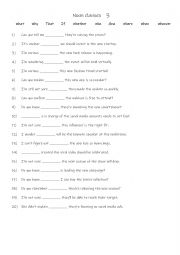
|
10 noun clauses 2
Students complete the gap-fill with the correct word. Each word is used 2 times! Answers on page 2.
Level: elementary
Age: 9-100
Type:
Downloads: 145
|
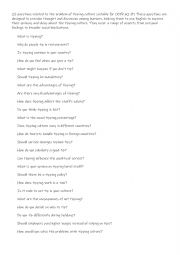
|
Tipping culture for CEFR A2-B1
25 questions related to the problem of tipping culture suitable for CEFR A2-B1 These questions are designed to provoke thought and discussion among learners, helping them to use English to express their opinions and ideas about the tipping culture. They cover a range of aspects from personal feelings to broader social implications.
Level: intermediate
Age: 15-100
Type:
Downloads: 123
|
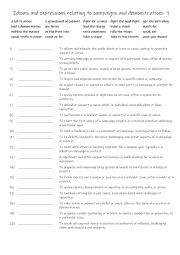
|
B1+-C1 Idioms and expressions relating to campaigns and demonstrations 1
First, students need to familiarise themselves with the 20 idioms and expressions and their meanings. Then they read the definitions to see which one is being described and write that word in the space provided Answers on page 2.
Level: intermediate
Age: 12-100
Type:
Downloads: 123
|
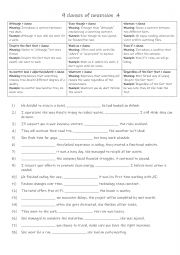
|
9 clauses of concession 4
First, students need to familiarise themselves with the 9 clauses and their meanings. Then they read the sentences to see which one is required to complete the gap-fill. Each clause is used 2 times! Answers on page 2.
Level: intermediate
Age: 10-100
Type:
Downloads: 136
|
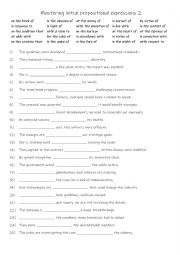
|
B2-C1 Mastering prepositional expressions 2
Mastering initial prepositional expressions is important for improving fluency and precision in English communication. By focusing on prepositions that commonly introduce phrases, you can strengthen your ability to express relationships between ideas, such as time, place, or cause and effect. Additionally, mastering these expressions enhances both ...
Level: intermediate
Age: 10-100
Type:
Downloads: 135
|
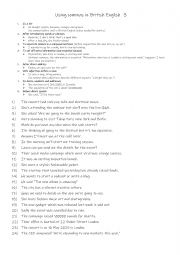
|
Using commas in British English 3
First, students need to familiarise themselves with the 8 reasons why a comma is used. Then they read the sentences and punctuate them accordingly. Answers on page 2.
Level: elementary
Age: 10-100
Type:
Downloads: 108
|
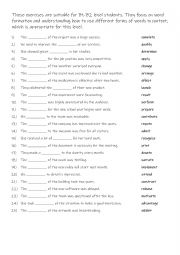
|
Word formation practise
Word formation supports more nuanced expression. Learners can tailor their language to convey specific meanings or tones by manipulating word forms (e.g., choosing between �happy� and �happiness� or �inform� and �information�).These exercises are suitable for B1-B2 level students. They focus on word formation and understanding how to use different ...
Level: intermediate
Age: 10-100
Type:
Downloads: 127
|
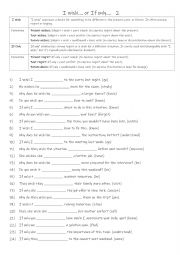
|
B1-B2 I wish�. or If only�. 2
Students should learn "I wish�" and "If only�" because these structures enable them to express regrets, desires, and hypothetical situations, adding emotional depth and complexity to their language (e.g., I wish I knew the answer or If only I hadn�t missed the train). They help students communicate feelings like hope, frustration, or disappointment...
Level: elementary
Age: 10-100
Type:
Downloads: 121
|
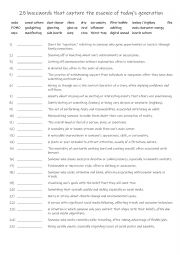
|
B1+-C1 25 buzzwords that capture the essence of today�s generation
Learning modern buzzwords like woke, cancel culture, FOMO, ghosting, and digital nomad is essential for understanding and participating in conversations that capture the values, trends, and social concerns of today�s generation. These words help us articulate cultural phenomena, such as eco-anxiety and hustle culture, reflecting shared anxieties an...
Level: intermediate
Age: 10-100
Type:
Downloads: 104
|
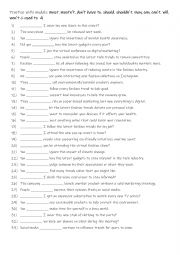
|
A1+-A2 Practise with modals must, mustn�t, don�t have to, should, shouldn�t, may, can, can�t, will, won�t & used to 4
First, students need to familiarise themselves with the modals and their use. Then they read the sentences to see which one is needed to complete the sentence. Answers on page 2.
Level: elementary
Age: 8-100
Type:
Downloads: 123
|
|
|
|
|












